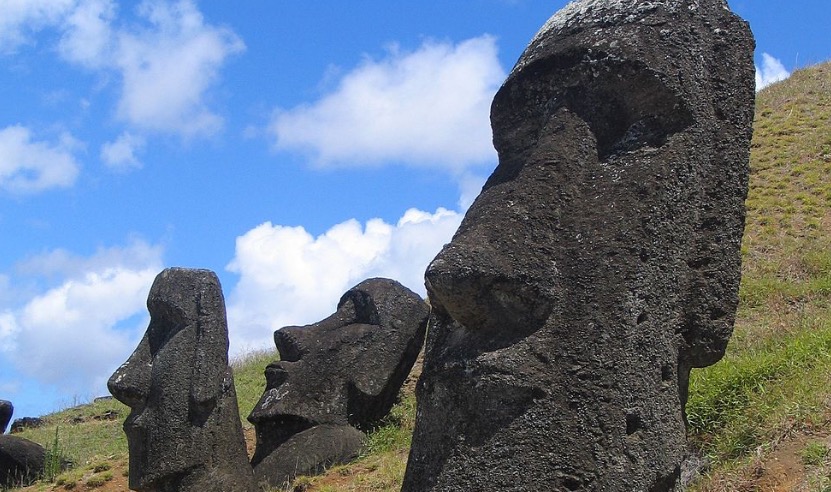
This week Josh Gates and the Expedition Unknown: Hunt For ExtraTerrestrials team head to Easter Island which some ancient alien theorists think aliens could have visited in the distant past.
Easter Island or Rapa Nui (in Polynesian) lies in the southeastern part of the Pacific Ocean and is most famous for the 887 statues that gaze out across the landscape.
Known as moai, they were created by the Rapa Nui civilization over hundreds of years, with initial settlement of the world’s most remote island taking place between 700 and 1100 CE.

However, as the population increased and invasive species like the Polynesian rat upset the ecosystem the civilisation began to decline. Ironically the very thing the island is most famous for might have hastened the decline. Moving the statues around the island involved a huge amount of deforestation and this left the fragile top soil exposed, degrading the value of the limited agricultural land.
The island is a UNESCO World Heritage Site and archeologists have spent decades studying the statues and the culture that produced them.
However, some ancient alien theorists think that some sort of extraterrestrial contact might have seeded the strange activity and building.
Also on this episode, Josh heads to Zimbabwe in Africa to investigate a recent meteorite strike. Many scientists think that life on Earth could have been seeded through celestial objects hitting the planet and a recent strike like this offers some opportunity to test the theory.
Expedition Unknown: Hunt For ExtraTerrestrials airs on Wednesdays at 9:00 PM on Travel Channel.